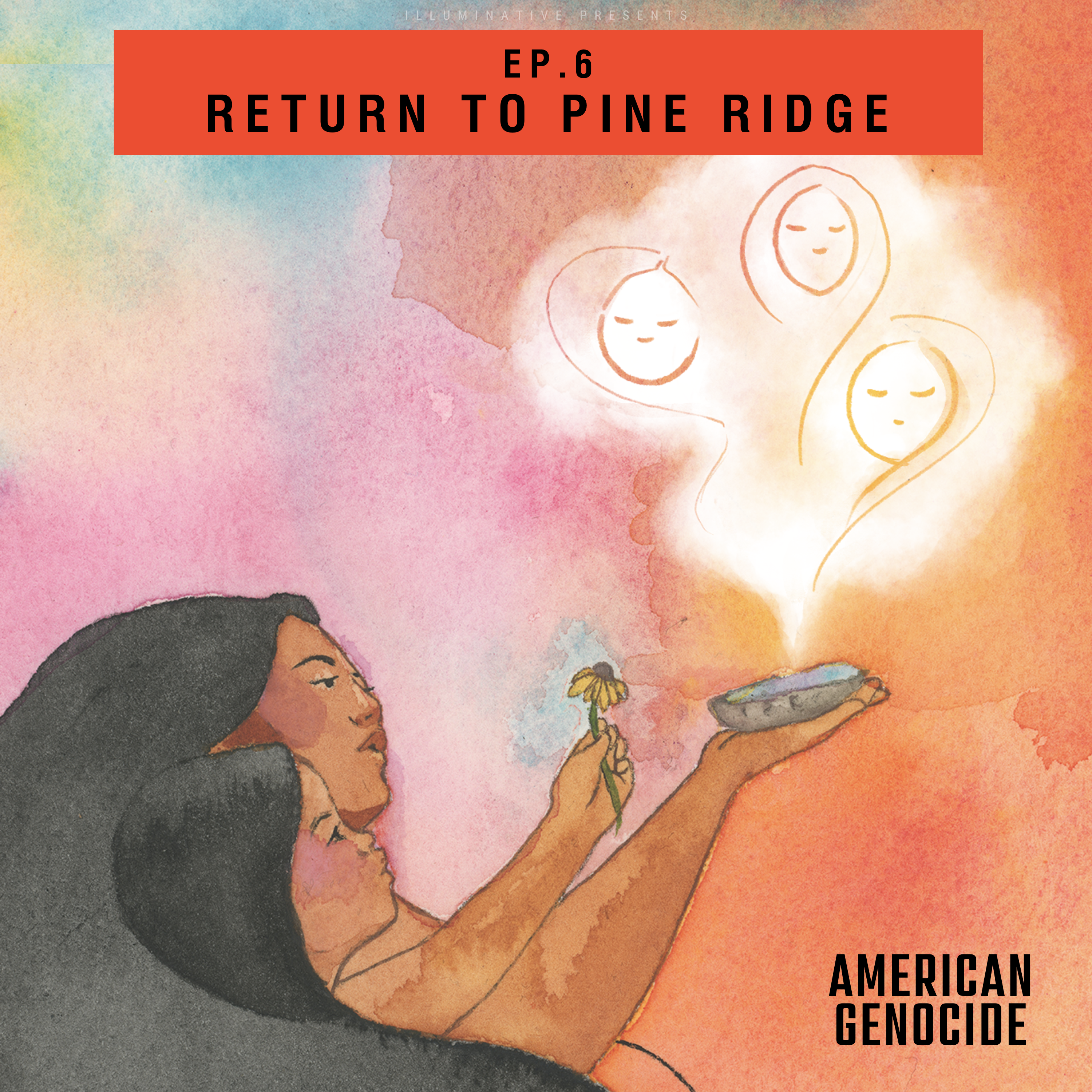
In May 2022, the Department of the Interior released Volume 1 of their investigative report on the Federal Indian Boarding School system, identifying 408 federal schools nationwide that employed policies of cultural assimilation and territorial dispossession of Native peoples. The report detailed systematic methods to assimilate Native children and erase their culture, including rampant physical, sexual, and emotional abuse. It’s estimated that more than 100,000 Native children were forced to attend these schools, many of them forcibly removed from their communities and forbidden to speak Native languages or participate in Native religions and cultural practices. These schools, funded and supported by the federal government and Catholic Church, were weapons designed to eradicate Native peoples. Motivated to bring this largely unknown history to light, IllumiNative set out to investigate the mass genocide and cultural cleansing of Native children that has plagued generations of Native peoples. In a search for justice and reconciliation, podcast hosts Crystal Echo Hawk (Pawnee) and Lashay Wesley (Choctaw) went to Red Cloud Indian School, the epicenter of controversy in America’s attempt to reckon with this dark history. While today some see the school as a positive presence in the Pine Ridge Reservation, home to the Oglala Lakota tribe, others cite it as a perpetrator of generational trauma. Crystal and Lashay hit the ground in Pine Ridge, South Dakota to chronicle the actively-developing situation for themselves and discover whether it’s possible for a community, Native peoples, and the U.S. to achieve truth, healing, and reconciliation.
Storytelling is an integral part of the Native community to preserve our culture and history, and it’s how we heal and make sense of our past. In order to share this history and reach the majority of uninformed Americans, we needed to tell it in a digestible and accessible way. This story had to be told, and a podcast was the best way to do it – honoring the storytelling traditions of our community. Our first step was to schedule interviews, spend time at Red Cloud, and record content for each episode. We built trust with community members, Red Cloud school administrators, local elders and boarding school survivors, youth activists, and the Pine Ridge reservation. For some of the survivors we spoke with, this was the first time they were talking openly about their experience. It was critical that we led our investigation with respect, grace, and honor. Once we completed our interviews, we started production. Working with DIGA Studios and Madica Productions, we created a six episode series that detailed our investigation, everyone we met at Red Cloud and Pine Ridge, and the ground-penetrating radar search for mass graves. As we prepared to air our first episode, we hit our biggest challenge: building an audience entirely from scratch. American Genocide was entirely self distributed and we had zero audience to start. This was incredibly daunting, as typically the most successful podcasts are those that are part of a larger network, have multiple seasons, and are backed by media companies. In order to create initial buzz around the series, we targeted folks who were familiar with the issue and history, namely the Native community. We partnered with Native Tribes like the San Manuel Band of Mission Indians and organizations like The National Native American Boarding School Healing Coalition and did on the ground activations across Native-driven events such as Gathering of Nations to get the word out, build organic listeners, and provide a resource for our audience. We led with a clear call to action - to like and subscribe - so we could reach as many people as possible. To tackle the distribution issue, we knew we needed to make a splash in the media world. We partnered with Variety at SXSW to launch the news about the podcast with legitimacy and recognition within the entertainment space. We also partnered with Crooked Media to run ads and a PSA because we knew the Crooked Media audience would be interested in this story and familiar with podcasts. Finally, we worked to secure earned media coverage in diverse outlets to reach a wide range of audiences, and secured talent partnerships and amplification to reach folks on different platforms. Our strategy for this outreach hinged on our decision to categorize the podcast as true crime. Because this is such a versatile and popular category, we were able to engage a variety of listeners, many of whom may not have found this podcast without that clarification.
We built an entire podcast audience and fully integrated marketing campaign from scratch, sparking a national conversation around the ongoing federal investigation into the crimes against Native children within Native American boarding schools. To date, the podcast has received over 90,000 downloads, peaking at #36 on U.S. Apple Podcasts: True Crime Chart and #175 U.S. Apple Podcasts: All Podcasts Chart. The series reached more than 100 countries and garnered over half a billion total earned media impressions through 16 pieces of secured coverage, over half a billion total paid social influencer impressions, over 12 million total paid social impressions, over 10 million total paid partnership impressions, and 48.5 million estimated earned talent reach. We secured earned coverage in People Magazine, CNN International, Town & Country, POLITICO, NPR, Vanity Fair, and more. We placed op-eds in ELLE and Glamour reflecting on the podcast and the power of sharing these stories for the first time. Our talent supporters included Mark Ruffalo, Eva Longoria, Mayim Bialik, Yvette Nicole Brown, and more, and we secured influencer partnerships with impactful online voices including Anthony Padilla, Kahlil Greene, Laysie Brandy, Nessa Diosdado, Taylor Cassidy, and V Spehar. The podcast beat all possible expectations, and ultimately was successful in shedding light on this horrific history and one of the U.S. government’s best kept secrets.






